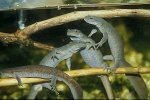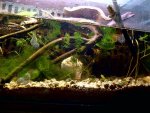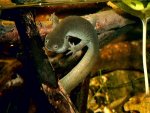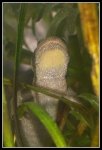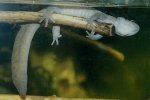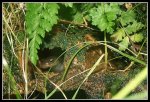henk_wallays
Caudata.org Donor
- Joined
- May 7, 2007
- Messages
- 36
- Reaction score
- 8
- Points
- 0
- Location
- Aalter , Belgium
- Country
- Belgium
- Display Name
- Henk Wallays
At this moment most of my Hynobidae are sest in plastic curver boxes filled with moss , plenty of food and stones with hidig holes . It is winter time and they are in the garden house at almost outdoor temperatures. The idea is now to feed them alot so they can buidl up the reserves for the upcoming breeding period, which I hope may be interesting... I would at least like to breed H. retardatus again.

